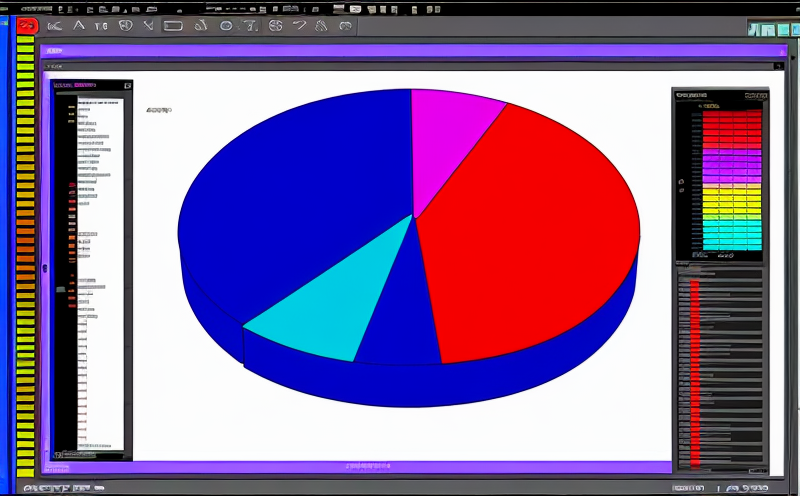Thermal Analysis
Thermal analysis is a crucial branch of chemical testing that involves the study of physical and chemical changes in materials as they undergo heating or cooling. This technique provides valuable insights into the thermal stability, phase transitions, melting points, glass transition temperatures, and decomposition behavior of substances. It is widely used across various sectors such as pharmaceuticals, polymers, minerals, and food science to ensure product quality and compliance with industry standards.
The primary apparatus utilized in thermal analysis includes Differential Scanning Calorimetry (DSC) and Thermo Gravimetric Analysis (TGA). DSC measures the heat flow between a sample and an inert reference material as they are heated or cooled, while TGA monitors changes in mass. These techniques allow for precise determination of key parameters such as glass transition temperatures (\(T_g\)), melting points (\(T_m\)), decomposition temperatures (\(T_d\)), and crystallization behavior.
In pharmaceuticals, thermal analysis helps in understanding the stability of active ingredients under different storage conditions. For polymers, it aids in assessing their molecular weight distribution, purity, and compatibility with other components. In food science, this method ensures that products meet safety and quality standards by identifying potential contaminants or harmful substances.
The process typically involves careful preparation of the sample to ensure accurate results. This may include grinding the material to a uniform particle size, drying it if necessary, and placing it into an appropriate crucible for analysis. Once prepared, the sample is placed in the calorimeter or balance where temperature changes can be monitored.
The data obtained from thermal analysis undergoes rigorous evaluation before being reported. This includes comparing results against established standards like ISO 11357-2 for polymers and ASTM D3418 for food products. The final report provides detailed information on the thermal properties of the sample, along with recommendations based on these findings.
Thermal analysis plays a vital role in ensuring product quality by providing critical data that can influence formulation decisions, storage conditions, and manufacturing processes. By understanding how materials behave under varying temperatures, manufacturers can optimize their operations to produce safer, more reliable products.
Benefits
Thermal analysis offers numerous advantages for industries reliant on chemical testing. Firstly, it provides deep insights into the thermal behavior of materials, enabling informed decision-making throughout product development cycles. Secondly, this technique ensures compliance with international standards by offering consistent and reproducible results.
For quality managers, thermal analysis simplifies regulatory submissions by providing robust evidence supporting claims about a product's stability and safety. Compliance officers benefit from its ability to detect potential issues early in the supply chain, reducing costly recalls later on. R&D engineers appreciate how it aids in optimizing formulations through precise control over processing temperatures.
From an operational standpoint, thermal analysis helps streamline production processes by identifying optimal operating conditions that enhance efficiency without compromising quality. For procurement departments, this method supports sourcing decisions by verifying supplier claims regarding material properties.
In summary, thermal analysis is indispensable for maintaining high standards of product integrity and regulatory compliance across diverse industries. Its versatility allows it to address unique challenges faced within each sector, making it a cornerstone technology in modern laboratories.
Why Choose This Test
Selecting thermal analysis as your preferred testing method offers several compelling reasons. Primarily, its ability to non-destructively assess materials makes it ideal for industries where sample integrity is paramount. Secondly, the precision and accuracy of modern instruments ensure reliable data, which builds trust among stakeholders.
Moreover, the flexibility offered by different types of thermal analyzers allows tailoring tests specifically to meet project requirements. Whether you need detailed information on phase transitions or comprehensive decomposition profiles, there’s an option available. Additionally, the cost-effectiveness of thermal analysis compared to alternative destructive methods cannot be overlooked.
The simplicity of operation also contributes significantly to its appeal. Even without extensive training, most technicians can perform basic tests following straightforward protocols provided by manufacturers. Advanced features like automated sample handling further enhance usability without increasing complexity.
Lastly, the growing body of literature supporting thermal analysis adds credibility to findings generated using this technique. This includes peer-reviewed articles published in reputable journals that detail case studies and best practices. Such publications serve as valuable resources for professionals looking to stay updated on current trends and innovations within their fields.
International Acceptance and Recognition
Thermal analysis enjoys widespread recognition from regulatory bodies around the world, ensuring its relevance regardless of geographical location. Organizations such as the United States Food and Drug Administration (FDA), European Medicines Agency (EMA), International Organization for Standardization (ISO), American Society for Testing and Materials (ASTM), British Standards Institution (BSI), and others have endorsed various aspects of thermal analysis.
For instance, ISO standards like ISO 11357-2 specify procedures for determining the thermal properties of polymers using differential scanning calorimetry. Similarly, ASTM D3418 sets guidelines for evaluating food products via thermogravimetric analysis. These international standards provide a common language that facilitates global communication and collaboration among professionals.
The acceptance of thermal analysis extends beyond regulatory frameworks into academic circles as well. Researchers frequently cite studies conducted using this technique in their publications, thereby reinforcing its importance within the scientific community. Furthermore, professional societies often organize conferences focusing on advancements in thermal analysis, attracting experts from various disciplines who share knowledge and experiences.
This global acceptance translates directly to enhanced credibility when conducting tests for international markets or collaborating with multinational partners. Whether you're exporting products internationally or participating in joint ventures abroad, having tests conducted according to widely accepted protocols can ease compliance processes and foster trust among clients.





